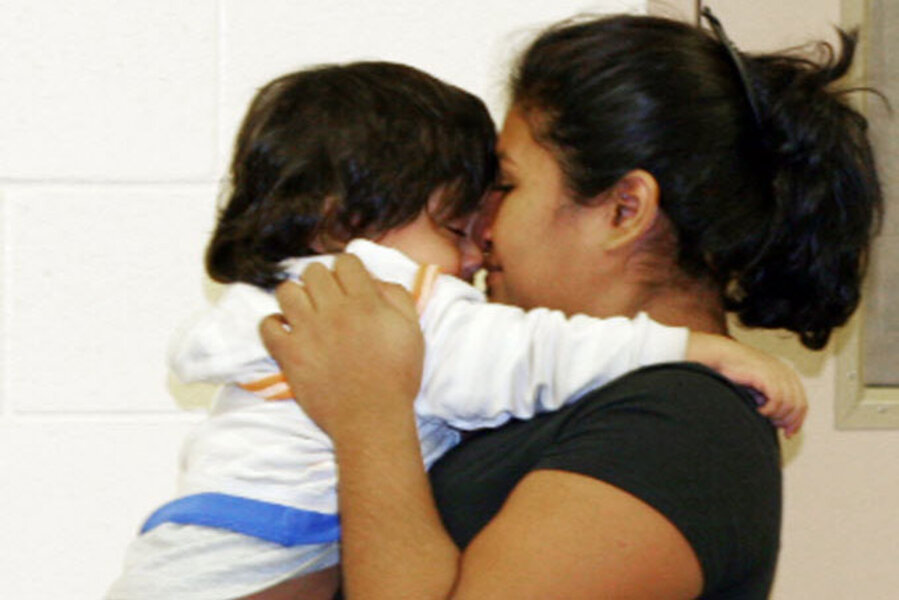Border patrol reunites mother with baby, ordeal highlights migrant perils
Loading...
In an emotional turn in what likely has been an already arduous journey, a Mexican mother has been reunited with her child after becoming separated while attempting to sneak into the United States.
The woman lost track of her 15-month-old son after she became injured while attempting to climb over a border fence on the Mexican side. She entrusted the boy to smugglers who promised to get him across the border.
US Customs and Border Control agents found the boy with a Guatemalan woman who was carrying the baby near Douglas, Ariz. The mother had been found on the US side of the border while searching for her son, Border Patrol spokesman Matthew Eisenhauer told the Associated Press.
Once reunited, the mother and son, were returned to Mexico.
Their separation is a poignant illustration of the perils faced by migrants involved in the most recent wave of people attempting to sneak into the United States through Mexico. Tens of thousands of Central Americans – most of whom have travelled much further than this woman and her child – brave treacherous terrain, entrust their lives and those of their loved ones to profit-seeking smugglers, and set out for better opportunities in the United States, despite the possibility of being found by US authorities and sent back over the border.
This influx of migrants, the second to overwhelm the US border in two years, has prompted the Obama administration to reexamine the legal process by which people fleeing violence in Central America can seek asylum in the United States.
Since October 16,000 children traveling alone and more than 20,800 people traveling as families have been caught at the border, sparking concerns of a repeat of the unprecedented surge of unaccompanied children and families entering into the United States from El Salvador, Honduras, and Guatemala seen in the summer of 2014.
Mexican nationals caught trying to enter the United States illegally are usually deported quickly because of Mexico’s close proximity.
Families from Central America, many of which are fleeing violence and regional instability, are held in detention centers and their asylum or immigration cases are taken to the courts.
The Obama administration is working to expand a program in Central America that would allow potential migrants to apply for asylum without making the perilous and illegal journey to the United States.
Secretary of State John Kerry announced the expansion during a speech at the National Defense University Wednesday:
I am pleased to announce plans to expand the U.S. Refugee Admissions Program to help vulnerable families and individuals from El Salvador, Guatemala and Honduras, and offer them a safe and legal alternative to the dangerous journey many are currently tempted to begin, making them easy prey for human smugglers who have no interest but their own profits.
Later Wednesday, President Obama also authorized the State Department to access up to $70 million from the US Emergency Refugee and Migration Assistance Fund to assist migrants and refugees that come to the US.
The new policies are seen as extensions of a variety of tactics the Obama administration has used over the last two years designed to curb the flow of migrants from Central America.
The US admits around 70,000 refugees annually from around the world. Mr. Obama has called for relocating 10,000 Syrian refugees in the US this year alone.
We can both maintain the highest security standards and live up to our best traditions as Americans by welcoming those in need of help to our great country," Secretary Kerry said Wednesday, signaling that security is still a focus for the refugee program. "That is who we are. That is what we do."
This report includes material from the Associated Press.






